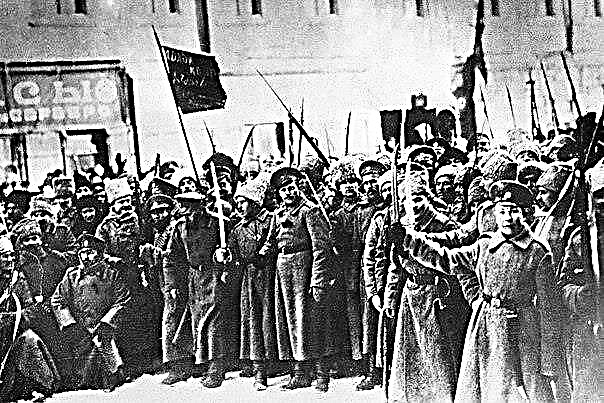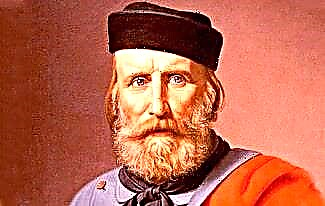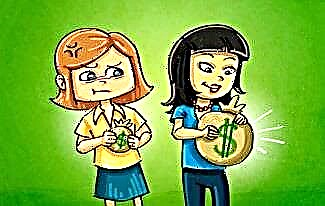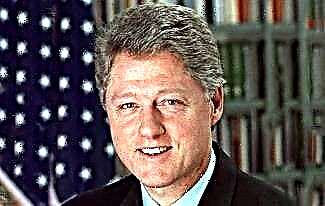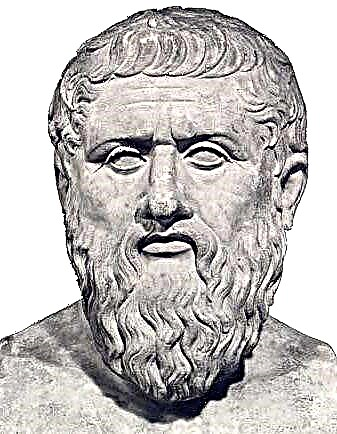In the twentieth century, sport has turned from a way of spending leisure time for a select few into a huge industry. In a historically short time, sporting events have evolved into elaborate shows, attracting tens of thousands of spectators in stadiums and sports arenas and hundreds of millions on television screens.
It is sad that this development took place against the backdrop of a fruitless and withering discussion about which sport is better: amateur or professional. Athletes were divided and culled, like purebred cattle - these are pure and bright amateurs, whose talent allows them to set world records, barely resting after a shift at the factory, or even dirty professionals stuffed with doping who set records in fear of losing a piece of bread.
Sober voices were always heard. However, they remained a voice crying in the wilderness. Back in 1964, one of the IOC members stated in an official report that a person who spends 1,600 hours a year in intensive training cannot fully engage in any other activity. They listened to him and made a decision: accepting equipment from sponsors is a form of payment that turns an athlete into a professional.
Life nevertheless showed the unacceptability of pure idealism. In the 1980s, professionals were allowed to participate in the Olympiads, and in a couple of decades, the line between amateurs and professionals moved to where it should be. Professionals compete with each other, and their inspired amateurs play sports for excitement or health benefits.

1. Professional sportsmen appeared exactly when the first competitions appeared, at least somewhat similar to sports, with regularly held competitions. Olympic champions in Ancient Greece were not only honored. They were given at home, expensive gifts, kept in between the Olympic Games, because the champion glorified the whole city. Repeated Olympic champion Guy Appuleius Diocles amassed the equivalent of $ 15 billion today in his sports career in the 2nd century AD. And who, if not professional athletes, were the Roman gladiators? They, contrary to popular belief, died very rarely - what's the point of the owner destroying expensive goods in a deadly duel. Having performed in the arena, the gladiators received their fee and went to celebrate it, enjoying great popularity among the audience. Later, fist fighters and wrestlers traveled along medieval roads as part of circus troupes, fighting with everyone. It is not surprising that with the beginning of sports competitions, on which tickets were sold and bets were made (by the way, no less ancient occupation than professional sports), specialists appeared who wanted to make money on their strength or skill. But officially, the line between professionals and amateurs was apparently first drawn in 1823. The students, who decided to arrange a rowing competition, did not allow a “professional” boatman named Stephen Davis to see them. In fact, the gentleman students did not want to compete or, even less, lose to some hard worker.
2. Something like this the line between professionals and amateurs was drawn until the end of the 19th century - gentlemen could participate in competitions with prizes of hundreds of pounds, and a coach or instructor who earned a measly 50 - 100 pounds a year was not allowed to compete. The approach was radically changed by Baron Pierre de Coubertin, who revived the Olympic movement. For all his eccentricity and idealism, Coubertin understood that sport would somehow become widespread. Therefore, he considered it necessary to develop general principles for determining the status of an amateur athlete. This took many years. As a result, we got a formulation of four requirements, which Jesus Christ would hardly have passed the test for. According to it, for example, an athlete who has lost at least one of his prizes at least once should be enrolled in professionals. This idealism created great problems in the Olympic movement and almost destroyed it.

3. The whole history of the so-called. amateur sports in the twentieth century has been a history of concessions and compromises. The International Olympic Committee (IOC), National Olympic Committees (NOCs) and International Sports Federations have gradually had to accept the payment of awards to athletes. They were called scholarships, compensations, rewards, but the essence did not change - athletes received money precisely for playing sports.
4. Contrary to the interpretations that developed later, the NOC of the USSR was the first to legitimize the receipt of money by athletes in 1964. The proposal was supported not only by the Olympic committees of the socialist countries, but also by the NOCs of Finland, France and a number of other states. However, the IOC had already become so ossified that the implementation of the proposal had to wait for more than 20 years.
5. The first professional sports club in the world was the Cincinnati Red Stockins baseball club. Baseball in the USA, despite the declared amateur nature of the game, has been played by professionals since 1862, who were hired by sponsors to fictitious positions with an inflated salary (the “bartender” received 50 dollars a week instead of 4 - 5, etc.). Stockins' management decided to end this practice. The best players were collected for a payment fund of $ 9,300 per season. During the season, “Stokins” won 56 matches with one draw without defeat, and the club due to ticket sales even came out in plus, earning $ 1.39 (this is not a typo).
6. Professional baseball in the United States has gone through a series of serious crises in its development. Leagues and clubs appeared and went bankrupt, club owners and players clashed among themselves more than once, politicians and government agencies tried to interfere in the activities of leagues. The only thing that remained unchanged was the growth of wages. The first “serious” professionals received just over a thousand dollars a month, which was three times the salary of a skilled worker. Already in the early twentieth century, baseball players were unhappy with the $ 2,500 salary cap. In the immediate aftermath of World War II, the baseball minimum wage was $ 5,000, while the stars were paid $ 100,000 each. From 1965 to 1970, the average salary rose from $ 17 to $ 25,000, and more than 20 players received more than $ 100,000 a year. By far the highest paid baseball player is the Los Angeles Dodgers' pitcher Clayton Kershaw. For 7 years of the contract, he is guaranteed to receive $ 215 million - $ 35.5 million a year.
7. The 5th IOC President Avery Brandage was the benchmark champion of the purity of amateur sports. Failing to make significant progress in athletics, Brandage, who grew up an orphan, made a fortune in construction and investment. In 1928, Brendage became the head of the US NOC, and in 1952 he became the president of the IOC. A staunch anti-communist and anti-Semite, Brandage brushed aside any attempt to reach a compromise in rewarding athletes. Under his leadership, merciless requirements were adopted, which made it possible to declare any athlete a professional. This could be done if the person interrupted their main job for more than 30 days, worked as a coach regardless of the sport, received help in the form of equipment or tickets, or a prize worth more than $ 40.
8. It is generally accepted that Brandage is a narrow-minded idealist, however, it may be worth looking at this idealist from a different angle. Brandage became the president of the IOC in the years when the USSR and other socialist countries literally burst into the international sports arena. The countries of the socialist camp, in which the athletes were officially supported by the state, more than actively entered the struggle for Olympic medals. Competitors, primarily American ones, had to move, and the prospect did not please. Perhaps Brandage paved the way for a scandal and the massive exclusion of representatives of the Soviet Union and other socialist countries from the Olympic movement. For many years being the president of the US NOC, the functionary could not help but know about the scholarships and other bonuses that American athletes received, but for some reason, over 24 years of rule, he never eradicated this shame. Professionalism in sports began to worry him only after being elected President of the IOC. Most likely, the constantly growing international authority of the USSR did not allow the scandal to ignite.
9. One of the victims of the “hunt for professionals” was the outstanding American athlete Jim Thorpe. At the 1912 Olympics, Thorpe won two gold medals, winning the track and field pentathlon and decathlon. According to legend, King George of Sweden called him the best athlete in the world, and Russian Emperor Nicholas II presented Thorp with a special personal award. The athlete returned home as a hero, but the establishment did not like Thorpe very much - he was an Indian, who were almost completely exterminated by that time. The US IOC turned to the NOC with a denunciation of its own athlete - before the Olympic triumph, Thorpe was a professional footballer. The IOC reacted instantly, stripping Thorpe of the medals. In fact, Thorpe did play (American) football and did get paid for it. American professional football was taking its first steps. The teams existed in the form of companies of players who “picked up” players from among friends or acquaintances for the match. Such “professionals” could play for two different teams in two days. Thorpe was a fast and strong guy, he was invited to play with pleasure. If he needed to play in another city, he was paid for bus tickets and lunch. In one of the teams, he played for two months during his student holidays, receiving a total of $ 120. When he was offered a full contract, Thorpe refused - he dreamed of performing at the Olympics. Thorpe was formally acquitted only in 1983.

10. Despite the fact that sports such as baseball, hockey, American football and basketball have little in common, in the United States leagues for these sports operate according to the same model. To Europeans, it may seem wild. Clubs - brands - are not owned by their owners, but by the league itself. It delegates to presidents and boards of directors the rights to run clubs. Those in return must follow a lot of instructions, which spell out almost all aspects of management, from organizational to financial. Despite the apparent complexity, the system fully justifies itself - the incomes of both players and clubs are constantly growing. For example, in the 1999/2000 season, the highest paid basketball player at that time, Shaquille O'Neal, earned a little over $ 17 million. In the 2018/2109 season, Golden State player Stephen Curry received 37.5 million with the prospect of increasing the patch to 45 million. O'Neill in the ended season would have taken a place in the middle of the seventh by the level of salary. Club revenues are growing at about the same rate. Some clubs may be unprofitable, but the League as a whole always remains profitable.
11. The first professional tennis player was Frenchwoman Susan Lenglen. In 1920, she won the Olympic tennis tournament in Amsterdam. In 1926, Lenglen signed a contract that received $ 75,000 for the demonstration games in the United States. The tour, in addition to her, was attended by US champion Mary Brown, two-time Olympic champion Vince Richards and several lower ranked players. Performances in New York and other cities were successful, and already in 1927 the first US Professional Championship took place. In the 1930s, a world tournament system developed, and Jack Kramer revolutionized professional tennis. It was he, a former tennis player in the past, who began to hold tournaments with the determination of the winner (before that, the professionals simply played several matches that were not related to each other). The outflow of the best amateurs to professional tennis began. After a short struggle in 1967, the onset of the so-called "Open Era" was announced - the ban on amateurs from participating in professional tournaments was canceled and vice versa. In fact, all the players participating in the tournaments have become professionals.
12. It is common knowledge that a professional athlete's career is rarely long, at least at the highest level. But statistics show that it is more correct to call a professional career a short one. According to the statistics of American leagues, the average basketball player has been playing at the highest level for less than 5 years, hockey and baseball players for about 5.5 years, and football players for just over 3 years. During this time, a basketball player manages to earn about $ 30 million, a baseball player - 26, a hockey player - 17, and a football player “only” $ 5.1 million. But the first stars of the NHL gave up hockey, getting the position of a petty clerk, a job as a butcher, or the opportunity to open a small music store. Even superstar Phil Esposito worked part-time at a steel plant between NHL seasons until 1972.
13. Professional tennis is a sport for very rich people. Despite the millions of dollars in prize money, the vast majority of professionals are losing money. Analysts have calculated that in order to balance the cost of flights, meals, accommodation, coach salaries, etc. with prize money to zero, a tennis player must earn about $ 350,000 per season. This is taking into account the hypothetical iron health, when tournaments are not skipped and there are no medical costs. There are less than 150 such players in the world for men and just over 100 for women. Of course, there are sponsorship contracts and payments from tennis federations. But sponsors are turning their attention to players from the top of the tops, and federations pay a limited number of scholarships, and not in all countries. But before a beginner professional goes to court for the first time, tens of thousands of dollars must be invested in him.
14. Emmanuel Yarborough is perhaps the best illustration of the contradictions between professional and amateur sports in martial arts. A good-natured guy weighing under 400 kilograms performed great in sumo for amateurs. Professional sumo turned out to be not for him - fat professionals behaved too hard. Yarborough moved into fighting without rules, which began to gain fashion, but he did not succeed there either - 1 victory with 3 defeats. Yarborough died at the age of 51 after a series of heart attacks.
15. The income of professional athletes and competition organizers directly depends on the audience interest. In the early days of professional sports, ticket sales were the main source of income. In the second half of the twentieth century, television became the trendsetter, providing the lion's share of income in most sports. Whoever pays calls the tune. In some sports, for the sake of television broadcasts, the rules of the game had to be radically changed. Apart from the cosmetic changes that occur almost every year in basketball and hockey, the most revolutionary sports are tennis, volleyball and table tennis. In tennis in the early 1970s, the rule was bypassed that a tennis player won a set by at least two games. We got rid of the long swing by introducing a tie-break - a short game, the winner of which also won the set. There was a similar problem in volleyball, but there it was also aggravated by the fact that in order to gain a point, the team had to play the serve. The principle “every ball is a point” has made volleyball one of the most dynamic games. Under the guise of dragging the ability to hit the ball with any part of the body, including the legs.Finally, table tennis increased the size of the ball, reduced the number of innings performed by one player in a row from 5 to 2 and started playing to 11 points instead of 21. The reforms have positively affected the popularity of all these sports.



